18 March 2025
![]() 36 mins Read
36 mins Read
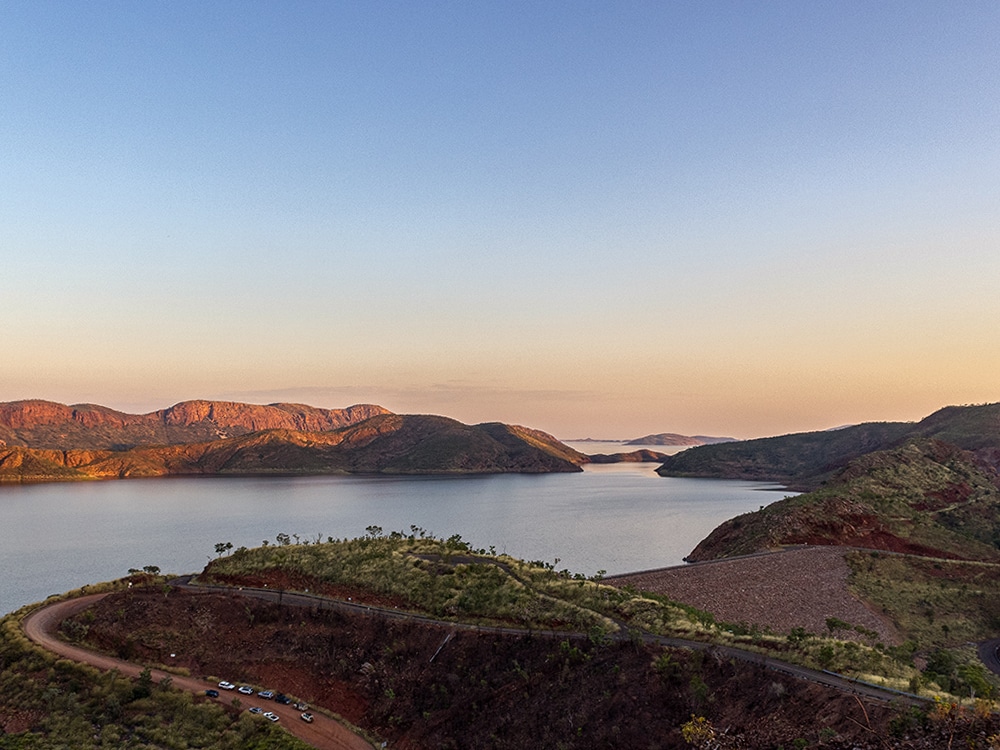
As far as short breaks go, Canberra is the whole package: a compact city where heavyweight national icons are met with world-class gallery offerings and offset by a current of rule-breaking creative energy manifesting in up-and-coming suburbs.
Check in at Ovolo Nishi, which is housed within the architecturally exciting Nishi building.
Make a dinner reservation at Monster Kitchen and Bar, Ovolo Nishi’s eclectically outfitted in-house restaurant that serves up modern Australian with Japanese and Middle Eastern inflections.
Get up at the crack of dawn for a hot-air balloon ride over the city with Balloon Aloft. Reward yourself afterwards with breakfast at Barrio in the hip hood of Braddon, before exploring its boutiques and design stores. If it’s vintage finds and handcrafted gems you’re after, make sure you head to the recently opened Dirty Janes Canberra in Fyshwick (of Bowral fame) to pick up some treasures to take home.
Spend the afternoon with Canberra’s national icons: Australian War Memorial, National Museum of Australia and Parliament House. And make time to visit the National Gallery of Australia on the shores of Lake Burley Griffin.
For an evening of good food, fine wine and great music, head to Bar Rochford. It is a bar first and foremost, but serves a concise menu of sophisticated modern Australian dishes.
Eat breakfast at Monster before making your way to south Canberra to visit Canberra Glassworks within the historic Kingston Power House. Explore its industrial-cathedral interiors via a gallery exhibition, a heritage tour or by taking part in a glassblowing session. Then drop into the Old Bus Depot Markets next door (held every Sunday).
Pick up some lunch from the markets and head to the Kingston Foreshore to hire an electric picnic boat from GoBoat to spend a lazy afternoon on Lake Burley Griffin.
Check out of your hotel and head down the road for a caffeine fix at The Cupping Room before taking the long way home to explore the city’s cold-climate wine region; it’s home to more than 30 cellar doors. Clonakilla, Mount Majura Vineyard and Helm Wines are top choices.
If you’re driving back towards Sydney, stop off along the way in Bowral for a stroll around the boutiques and bookshops and high tea at Dirty Janes.
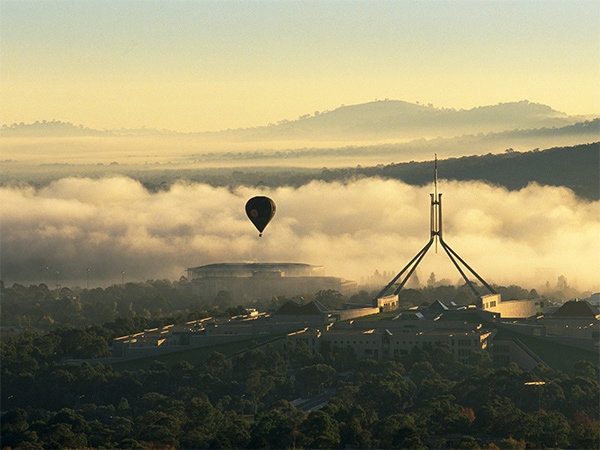
Spend three nights discovering the best of Canberra from every angle. (Credit Canberra Tourist Commission)
Nowhere is it written that a weekend away requires booking a hotel room in a far-flung country town or smack in the middle of the city. The rise in the number of accommodations taking up residence in inner- and outer-city suburbs is a trend to get onboard with. Here, some suburban stays worth investigation.
Located in the inner-west Sydney suburb of Burwood, Marsden Hotel boasts understated luxury appointments and a range of destination eateries and bars including pretty-in-pink patisserie Artisaint and the rooftop Skye Bar, complete with pool and stunning views.
Combining a heritage home with a sleek new build, The Albert is a 26-room boutique hotel on Sydney’s North Shore that offers stylish interiors and access to all the beaches, cafes and shopping in Mosman, plus Taronga Zoo down the road.
Retrofitted into a row of terrace houses in the funky Sydney suburb of Potts Point, Spicers Potts Point has 16 rooms and four suites, all fitted out in a restive, muted palette with splashes of blue and green to complement the dreamy, watery works by Sydney artist Martine Emdur hung throughout.
Located adjacent to the designer-filled Chadstone shopping centre, Hotel Chadstone Melbourne – MGallery by Sofitel has two chic dining spaces, a heated indoor pool and a Holism Retreat day spa.
The focus of Zagame’s House, a 97-room hotel in Melbourne’s Carlton suburb, is on all things design, with a side of sustainability for good measure. There’s a cosy street-side cafe, an art-daubed rental car – Freya the Fiat – available for guest use and a fur-friendly policy throughout.
Overlooking the track at Sydney’s Warwick Farm, the equine-themed five-star The William Inglis – MGallery hotel boasts luxuriously appointed rooms, an extensive health and wellness centre, a restaurant, cafe and bar, and stables, of course.

Check into Hotel Chadstone. (Credit Hotel Chadstone)
Four Australian Traveller contributors suggest the perfect inclusions for a weekend away in and around their home towns.
“I constantly dream about Rottnest Island, and each year I extend my annual stay. I can’t get enough of the simple life; bike and feet-transport on winding paths, hellos from strangers, quokkas nonchalantly hopping past, shockingly clear water in all the hues of a blue-green opal and barbecues sizzling each sunset. I like to stay in a basic balconied cottage at Geordie Bay, steal away to Little Parakeet Bay early or late and cycle to see the seals at West End. Day trips just don’t cut it.” Fleur Bainger, writer
“Those hankering for a quintessential Sydney experience should look no further than a table for two at The Apollo in Potts Point, followed by a cocktail at nearby speakeasy, Dulcie’s. It’s only a short stumble away from Spicers Potts Point, which means you’ll be well-placed to get an early morning breakfast table at another local institution: Room Ten.” Dilvin Yasa, writer
“It’s a good thing isolation is in vogue. Unyoked has quietly set its first Queensland tiny home free in the wild, just 1.5 hours ‘south-ish’ of Brisbane’s CBD. The location is a secret, but Remy sits waiting for sustainably minded wanderers, with all you need (read: fire pit, negroni ingredients) and nothing you don’t (read: TV and wi-fi).” Celeste Mitchell, writer
“Stay close to home and visit the Dandenong Ranges – our own incredible rainforest! Sherbrooke Falls is a great place to start, or try the stunning Alfred Nicholas Memorial Gardens, followed by a coffee next door at the Piggery Cafe.” Annette O’Brien, photographer
Located in the Indian Ocean 2600 kilometres north-west of Perth and closer to Asia than to mainland Australia, Christmas Island is unlike anywhere you’ve ever visited before.
It’s a true island paradise of tropical jungle fringed by turquoise waters that has so much more to offer than the headlines would lead you to believe. Come for the crabs made famous by Sir David Attenborough and stay for the luxury eco retreat Swell Lodge, secret swimming spots, snorkelling and an intriguing melting pot of cultures.
Like Christmas Island, the Cocos Keeling Islands is another external Australian territory in the Indian Ocean. About halfway between Perth and Sri Lanka, this is a tranquil and unspoilt atoll of 27 islands where days are spent lazing on long stretches of white-sand beaches, visiting uninhabited islands by canoe (only two are inhabited), kite surfing, fishing and snorkelling.
Course across the water from Darwin to soak in the rainbow of landscapes and culture that is the Tiwi Islands: with its tropical rainforests, clay-like cliffs and white-sand beaches matched in colour by its residents’ artistic flair and passion for sports. This strong pulse can be felt across the Tiwis’ two main islands, Bathurst and Melville, and culminates each year in the Tiwi Islands Football Grand Final and Art Sale.
Resting between New Zealand and New Caledonia, Norfolk Island is – geographically speaking – closer to Auckland than Sydney, yet it is officially part of NSW. A sub-tropical South Pacific island of rolling plains and dense pine forests with a craggy coastline that gives way to sparkling bays and world-class dive sites, it’s full of surprises.
Harnessing the abundance of homegrown produce, from fresh fish and beef to honey and cheese, Norfolk Island excels in the paddock-to-plate philosophy, and visitors can experience everything from progressive dinners at locals’ homes to simple but superfresh sunset fish fries.
Like its ‘neighbour’ Norfolk Island, Lord Howe Island is World Heritage listed and the remnant of a volcano that was active two to three million years ago.
A tiny island in the Tasman Sea, east of Port Macquarie, it is characterised by sandy beaches, subtropical forests and clear waters surveyed by the impressive Mt Gower, rated as one of Australia’s best day walks.
Lord Howe is also synonymous with luxury. And not just barefoot luxury or the luxury of only 400 guests being permitted onto the island at any one time, but the ‘I never want to leave’ kind of luxury in the shape of Capella Lodge.
And when you’re not busy doing not much at all, see how many of the 500 species of fish and 90 species of coral you can spot while snorkelling, catch some fish, or dabble in some citizen science.
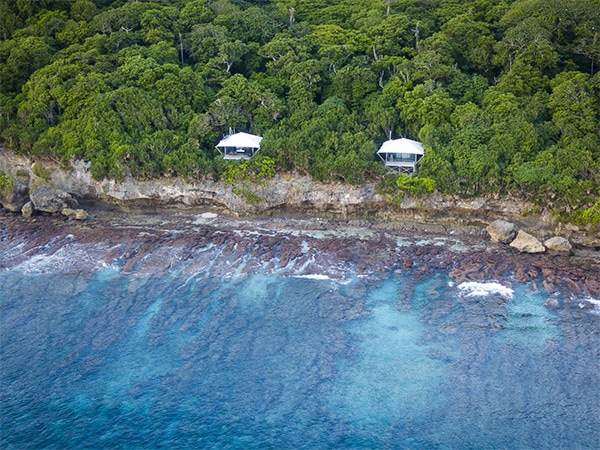
Christmas Island is just one of many of Australia’s island paradises. (Credit Christmas Island)
Australia is littered with stunning stones and monumental rocks that are worth going out of your way to see. Here, a ‘must see’ rock rollcall.
Karlu Karlu, NT: Otherwise known as the Devils Marbles, these compelling red boulders, some standing up to six metres high, are believed by the Warmungu people to be the fossilised eggs of the Rainbow Serpent. Located 100 kilometres south of Tennant Creek.
Mt Conner, NT: Located on the road from Kings Canyon to Yulara, this sandstone-topped monolith is also known as Fooluru due to the fact that many people mistake it for the slightly more famous monolith down the road.
Remarkable Rocks, SA: Located in Kangaroo Island’s Flinders Chase National Park, these granite boulders appear to be balancing perilously together at the water’s edge but have in fact been formed over hundreds of millions of years.
Sawn Rocks, NSW: Resembling a mammoth pipe organ, this stunning 40-metre-high rock formation is the remains of a lava flow from a volcanic eruption that took place some 21 million years ago. Located in Mt Kaputar National Park, it can be easily reached on the Sawn Rocks walking track.
Murphy’s Haystacks, SA: Considered some of the oldest rocks in Australia – between 1.6 and three billion years old, to be precise – the inselberg (island rock) sits on a hilltop in the Eyre Peninsula and is being slowly eroded away. While located on a private property, the site is open to the public.
Also check out: The Pinnacles on Western Australia’s Coral Coast; Burringurrah (Mt Augustus), the largest monolith in the world; the Indigenous art-daubed Ubirr in Kakadu National Park; and the Candlestick in Fortescue Bay in Tasmania.
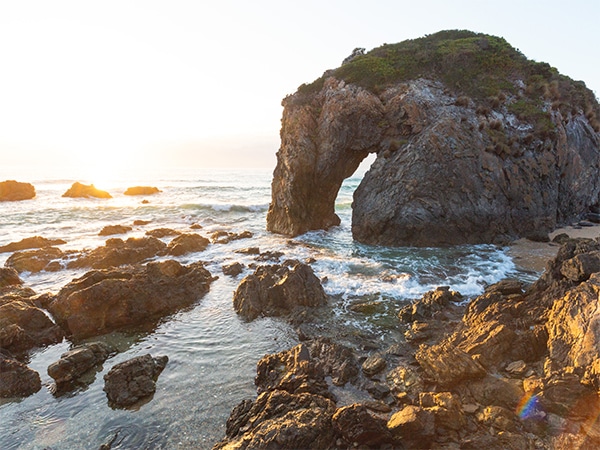
Make it your mission to see Australia’s most amazing rocks.
Larapinta Trail, NT: Tracing the ridges of the West MacDonnell Ranges over 223 kilometres from Alice Springs to Mt Sonder, the legendary long-distance Larapinta Trail winds through the Northern Territory’s ancient desert landscape. To complete the whole track you’ll need up to 20 days, but you can choose to walk sections or tag along with several operators including Australian Walking Holidays and Life’s an Adventure, which offer guided experiences condensed into under a week.
Carnarvon National Park, Qld: Covering off a raft of different topographies including rainforest, mountainside and sandstone gorges, Carnarvon Gorge and the Wild West is an eight-day guided walk with Auswalk that ventures into the heart of the Queensland outback and Carnarvon Gorge. You’ll stay in comfortable en suite chalets, cabins and glampsites along the way.
Flinders Ranges, SA: The 1200-kilometre Heysen Trail comprehensively covers South Australia’s diverse landscapes – including its epic outback. Head to the Flinders Ranges to hike sections of the trail. Australian Walking Holidays offers a six-day Heysen Trail and the Flinders Ranges tour as well as Wild Bush Luxury’s four-day Arkaba Walk, one of the Great Walks of Australia.
Kimberley Walking Tour, WA: Take on the majesty of the remote East Kimberley region and sleep under the stars in a swag with Park Trek’s 10-day walking and camping tour. Starting and ending in Kununurra and with 4WD transport to cover off some of the less foot-friendly distances. You’ll also stop at paradisiacal swimming spots along the way, including the warm pools of Zebedee Springs, and stay on the famous El Questro station.
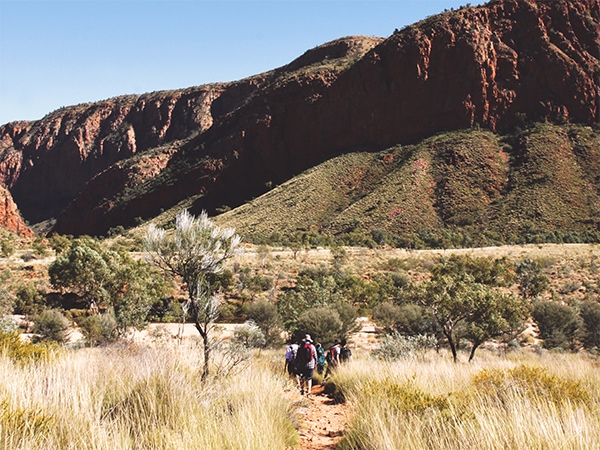
Set out on a multi-day outback hike, including the Larapinta Trail. (Credit World Expeditions / Great Walks of Australia)
Imagine you and your swag under the infinite night sky – with a few home comforts thrown in for good measure. Here, some of the best outback glamping spots across the country.
The Arkaba Walk – Wild Bush Luxury four-day venture into the magnificent Flinders Ranges and private Arkaba Conservancy connects you to the landscape with its ‘star beds’; sleep out in a deluxe swag, hot-water bottle included.
The remote Kooljaman at Cape Leveque, owned and run by the local Indigenous Bardi Jawi communities, offers unadulterated views of red pindan cliffs and the Indian Ocean, plus a bush butler service; stay in the solar-powered deluxe safari tent Pop Louie, named after a local Bardi Elder.
Sleep at the Bungle Bungle Wilderness Lodge within a stone’s throw of the Bungle Bungles, in the heart of Purnululu National Park, in an en suite tented cabin exclusive to APT that allows you to soak in all the colours of the Kimberley.
Feel at home among the buffalo and magpie geese at the Bamurru Plains Wild Bush Luxury lodge on the fringes of Kakadu National Park, and wake each day to a wild morning chorus permeating the mesh walls of your plush bungalow-style safari tent.
Spend your evenings at Ikara Safari Camp in South Australia on the deck of your safari tent, secluded among the river red gums, marvelling at the wonder of Wilpena Pound – you’ve got a front-row seat here.
Emma Gorge Resort on the Kimberley’s legendary El Questro station in WA has safari-style tents planted among the rocky red Cockburn Range in the shade of ancient boab trees; all the beauty of Emma Gorge, El Questro’s most popular gorge walk, is right on your doorstep.
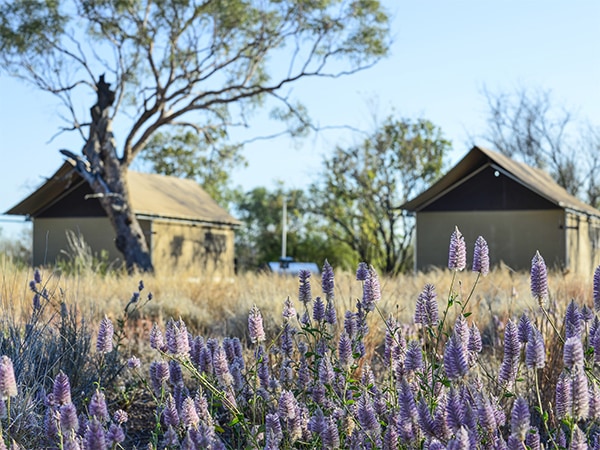
Sleep at the Bungle Bungle Wilderness Lodge.
Located in the heart of Queensland’s stunning Gulf Savannah region, Cobbold Gorge is a bit of a secret gem. The quiet beauty of the gorge can be experienced by cruising its length or, if you are feeling energetic, try stand-up paddleboarding it. And while a scenic helicopter flight used to be the only way to see the gorge from above, the completion of an 11-metre glass bridge stretching from one side to the other now offers a whole new perspective.
Found within Nitmiluk National Park, some 292 kilometres southeast of Darwin, Nitmiluk is actually a series of 13 sandstone gorges that stretches along the Katherine River. While there, you can cruise its waters or take to some of its celebrated walking trails; there are more than 100 kilometres of trails snaking through the park.
The Carnarvon Gorge is located in Queensland’s Carnarvon National Park. Visit to wonder at the Art Gallery, a significant Indigenous rock art site, and walk the 87-kilometre Carnarvon Great Walk, taking in soaring cliffs and sandstone escarpments.
West of Alice Springs in the Tjoritja/West MacDonnell National Park, Ormiston Gorge is a breathtaking combination of towering rock walls and abundant wildlife. You can do a spot of wild swimming in its cool waters or take on the slightly more strenuous (but equally rewarding) Ormiston Pound Walk.
With its soaring sides and astonishing acoustics, the natural amphitheatre at the end of the Cathedral Gorge, located within Western Australia’s Purnululu National Park, is a true geological wonder.
The sometimes challenging walk through Hancock Gorge located in WA’s Karijini National Park, is rewarded with a swim in the fresh green waters of Kermits Pool.
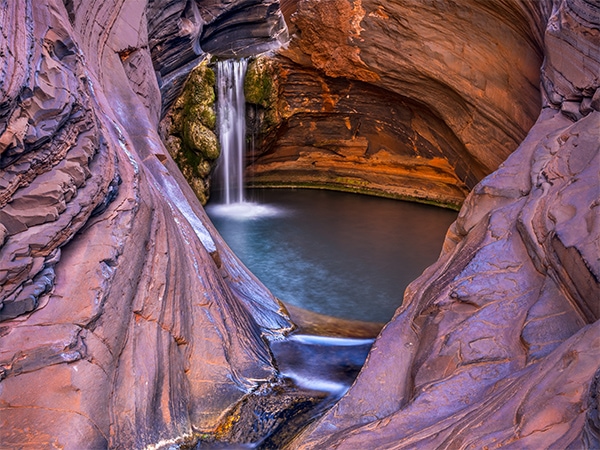
Visit Australia’s gorgeous gorges.
Drought is something we are used to in this wide brown land of ours, but many of us are often removed from the impact of it. One way to better understand what life on the land is like, and help out even for a few days, is by booking a station stay at one of the many working cattle stations that form a patchwork across the country.
Places like Trilby Station, a roughly 130,000-hectare property near the village of Louth in outback NSW, owned and run by Liz and Gary Murray. Or the organically farmed Kilcowera Station, a 38,000-hectare property halfway along the Dowling Track in Queensland. Or Moolooloo and Moorillah Station in the heart of South Australia’s Flinders Ranges; the merino sheep station has been in the Slade family for four generations.
Station stay accommodation options can be anything from campsites to shearer’s quarters to bunkhouses, with hearty meals often included. As for what to do when you are settled in, the activities run the gamut from outback hikes, yabbying and fishing, birdwatching and four wheel driving.
But possibly the most rewarding pastime is helping out with the day-to-day chores and jobs required to keep outback stations running smoothly. To find out more about station stays across the country, check out the options on Outback Beds, Station Stays SA and Outback Queensland.
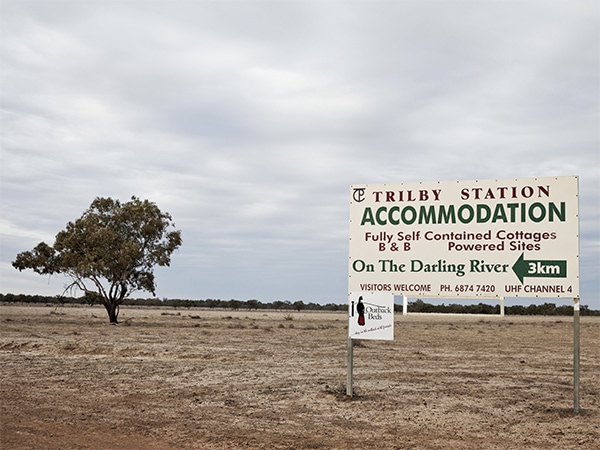
Trilby Station is a roughly 130,000-hectare property near the village of Louth in outback NSW. (Credit Destination NSW)
Great Southern is the latest rail adventure from Journey Beyond. This three-day, two-night exploration of Australia’s south-east corner will travel between Brisbane and Adelaide (and vice versa) each summer, stopping off at sunkissed beaches and buzzing capitals and ticking off bucket-list items along the way.
The Adelaide to Brisbane journey takes in Victoria’s Grampians region, culture-rich Canberra and the NSW Mid North Coast town of Coffs Harbour. The Brisbane to Adelaide leg explores the vineyards of NSW’s Hunter Valley and Newcastle, before fast-forwarding to Victoria for a day spent either in Melbourne or coasting along Great Ocean Road to see the Twelve Apostles, and hitting up the Adelaide Hills. Take it up a gear with extended packages that roll on for up to eight days and encompass everywhere from the Barossa Valley to Byron Bay.
There will be plenty of time onboard, of course, where you can expect to enjoy the same golden era-of-travel-style experience as passengers on The Ghan and Indian Pacific are accustomed to: fine wining and dining and world-class hospitality.
Great Southern is the latest rail adventure from Journey Beyond.
Legendary guide Sab Lord, of Lords Safaris, has spent more than a quarter of a century leading specialised tours through the Kimberley, Kakadu and Arnhem Land, so you can bet he knows where the best bits are. Here, his top five wild swimming spots to take his guests to.
1. Koolpin Gorge – Jarrangbarni by its Aboriginal name – is not a place for the average tourist, and not many people get to see it. The walk up the gorge is a real wilderness walk and requires you to be comfortable in very rough terrain and to be reasonably fit. A stunning gorge with a creek running through and waterholes to swim in, only 40 people are allowed there at any time and you will also need a permit from Kakadu National Park.
2. The small but beautiful swimming hole in Arnhem Land at Davidson’s safari camp. Access it from April to August by booking a trip with them or through us at Lords Safaris.
3. One of the most spectacular swimming spots in the Kimberley, Upper Manning Gorge is located close to Mt Barnett Roadhouse, which is the gateway to Manning Gorge, on the Gibb River Road. The walk to upper Manning Gorge takes around three hours return. Enjoy this large, deep pool that’s fed by a powerful waterfall (which you can swim right under).
4. Allow four to six hours return to hike to Mitchell Falls in the Kimberley so that enough time can be spent there. Relax at Little Mertens Falls on the way, where a natural spa falls from the escarpment above. Rocky ledges, fern-covered walls and natural spring waters are all features of the area. Exploring Mitchell Plateau with its magnificent system of waterfalls and superb scenery, you will be able to swim in any number of waterways above the falls.
5. Maguk is probably one of Kakadu National Park’s lesser-known attractions, a pristine natural waterfall and plunge pool at the base of steep gorge walls where you might find yourself swimming with black bream. You get there by following a 14-kilometre 4WD track off the Kakadu Highway and then walking for a kilometre through monsoon forests and crossing over Barramundi Creek.
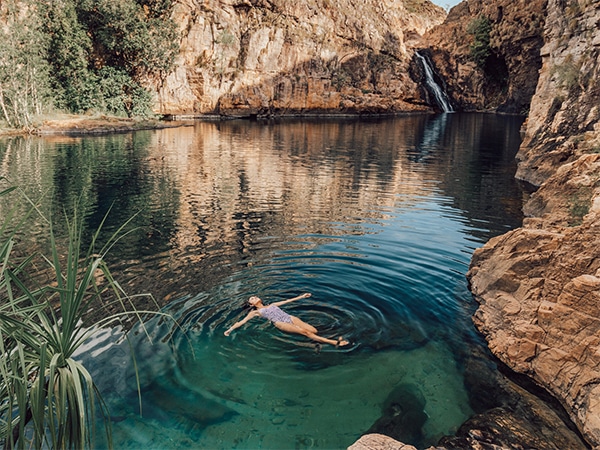
Seek out the best wild swimming spots in Kakadu, like Maguk. (Credit Tourism NT/Adriana Alvarado)
With more than 10,000 beaches to choose from in Australia (more than any other country in the world), there are plenty of sandy secret gems to make your own. Here, a hit list of beach holidays to come.
Mona Vale Beach on Sydney’s northern beaches for the stunning rock pools and local vibe.
Milk Beach in the eastern Sydney suburb of Vaucluse for the breathtaking view of the city skyline at sunset.
Twilight Beach in Esperance for its wide, white swathes of sand and great swimming.
Red Bluff, north of Carnarvon on the edge of the Ningaloo Reef Marine Park for the rugged coastal outback beauty and great surfing.
Myall Beach at Cape Tribulation for the convergence of two World Heritage sites: the Daintree and the Great Barrier Reef.
Blinky Beach on Lord Howe Island for its surfing, swimming and snorkelling.
Maslin Beach in South Australia’s Fleurieu Peninsula for its wide expanse and amazing multi-coloured cliffs.
Stokes Bay on the north coast of Kangaroo Island for its weaving approach through caves and around rocks, and secluded sandy beach.
Friendly Beaches in Tasmania’s Freycinet National Park for its middle-of-nowhere beauty and coastal bush walk.
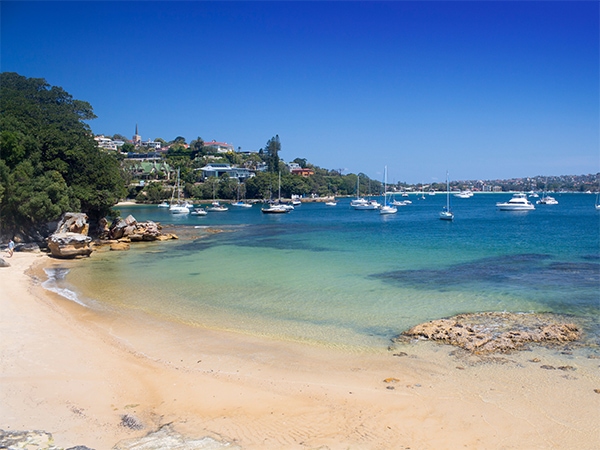
Spend time at some of Australia’s best kept secret beaches.
Australia has a raft of remarkable events that aim to share and preserve Aboriginal culture. The following festivals provide the chance to not only learn more about it, but fully immerse yourself in it, too.
Eighty kilometres south-east of Katherine, the small Aboriginal community of Barunga plays host to a 4000-strong crowd for the Barunga Festival, a celebration of Indigenous music, sport, cultural activities and traditional arts. Visitors can learn to cook damper, make didgeridoos and spears, and learn about bush medicine. There’s also an art shed exhibiting work by local artists, and traditional music and dance performances throughout the weekend.
A four-day gathering that aims to address and improve social equity for Indigenous people, Garma is arguably the most significant cultural event in Australia. Held at a remote ceremonial meeting ground in north-east Arnhem Land, it attracts around 2500 political and business leaders from across the globe. Guests learn about Aboriginal Australia and the rich Arnhem Land Yolngu culture through talks, dance, arts and song, and camp under the stars.
Since the 1980s the Aboriginal people of Cape York have celebrated their culture through song and dance at the Laura Dance Festival. Held every two years, the much-anticipated festival draws in thousands of visitors to watch local dance groups from 20 communities vying for the winner’s shield.
Winds of Zenadth Cultural Festival sees the communities of the Torres Strait Islands descend on Thursday Island for a celebration of their diverse cultures. Over four days this small isle is buzzing with activities, from boat races to storytelling and a showcase of local island cuisine.
What really sets The Karijini Experience event apart is its location in the remote and simply breathtaking Karijini National Park. The four-day program features around 50 events such as meditation and yoga in the ancient rugged landscape, guided cultural walks, film screenings under the stars, bush tucker high tea and more.
Part of Byron Bay’s long-running Bluesfest, Boomerang Festival is a showcase of local and regional Indigenous music, with artists coming from all over the country, the Torres Strait Islands and even Papua New Guinea. Festival-goers can partake in musical workshops, watch dance rituals and join thought-provoking cultural exchanges.
Yalukut Weelam Ngargee is one of Melbourne’s largest cultural festivals. The busy one-day schedule features different spaces to watch cultural performances and cooking demonstrations of native foods, and to partake in craft workshops such as basket weaving and face painting. You can also browse the food and market stalls.
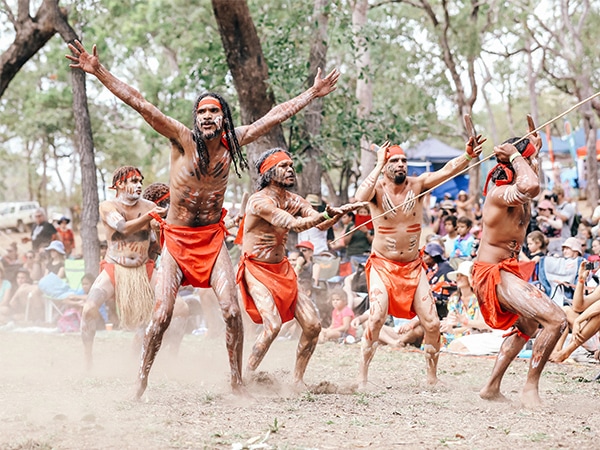
Catch an Indigenous festival, including the Laura Dance Festival. (Credit: Elise Hassey)
You don’t have to go all the way to the outback to encounter Indigenous culture; our cities and urban areas can trace long and proud Aboriginal histories that are recounted and celebrated in a range of tours, walks and experiences.
Browse the exhibitions and collections before setting off on the two-hour Scar Tree Walk, which links the modern city to the ancient Aboriginal past that took place here.
Bunjilaka Aboriginal Cultural Centre
View the First Peoples exhibition, take a walk through the Indigenous garden and don’t miss the daily eel feeding.
Aboriginal Heritage Walk, Royal Botanic Gardens Victoria
Part of the land of the Kulin Nation, take a tour of the gardens with an Aboriginal guide to learn about the traditions and stories of the local Boonwurrung and Woiwurrung people.
This all-day tour follows traditional songlines, walking through lush bushland, taking in rock art and ceremonial sites and learning about bush tucker, Dreamtime stories and bark painting.
An Indigenous rooftop farm in the heart of the inner-city suburb of Eveleigh, experiences include tours and talks and cocktail-making using native plants.
Join a 3.5-hour tour of Ku-ring-gai Chase National Park, learning the history of the Garigal people of Guringai nation; opt for the barbie lunch of kangaroo, emu, fish and damper.
Learn Indigenous history through the music, dance and stories of the Yuggera Aboriginal dancers.
The 45-minute Dreaming in the Quay walking tour with a local Nyungar guide around the bright, shiny Elizabeth Quay development explores the near and ancient history of the people of the Swan River.
Tandanya National Aboriginal Cultural Institute
Australia’s oldest Aboriginal owned and managed multi-arts centre holds exhibitions, performances and art fairs exploring modern and traditional Indigenous culture.
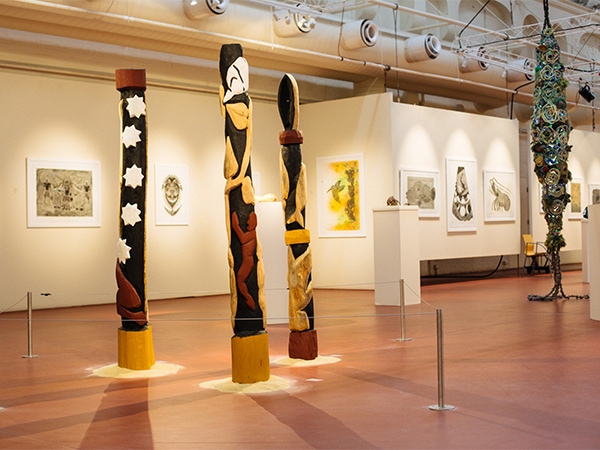
Have an urban Indigenous experience. (Credit: South Australian Tourism Commission)
For those who like their cities small and perfectly formed, these second cities offer up first-class exploration.
Launceston: Tasmania’s northern city is becoming ever more cosmopolitan. While traditional attractions such as Bridestowe Lavender Estate are still a strong pull for visitors, they are now being complemented with chic eateries such as Timbre Kitchen, Charlie’s Dessert House and Tasmanian Food & Wine Conservatory; boutique hotels – Change Overnight or The Florance; and headlining events including Festivale, showcasing the best of Tasmanian food, beverage and entertainment.
Albany: Located in south-west WA, make sure to visit the award-winning National Anzac Centre; in 1914, Albany was the final departure point for the first wave of ANZAC troops heading to the battlefields of the First World War. The city also offers stunning beaches, the natural wonders of Torndirrup National Park and diving the scuttled wreck of the Perth II. Visit the museum at Albany’s Historic Whaling Station, before taking a whale-watching cruise in King George Sound.
Fremantle: Visitors flock here to browse the historic markets (established in 1897), sip coffee on its bustling ‘Cappuccino Strip’ of South Terrace, eat fresh-off-the-boat seafood at its harbour and enjoy the laid-back waterfront lifestyle it is famed for – and it’s only a 30-minute drive from Perth.
Bundaberg: There’s a lot to recommend this city apart from the rum distillery. Head to Bargara to sample the wares of Bargara Brewery and dine at The Windmill Cafe. Check out cultural highlights like the brightly painted School of Arts, the Fairymead House Sugar History Museum and the Bundaberg Regional Art Gallery. Head to Mons Repos to see the turtle hatchings (November to March) and use the city as a base to explore the wonders of the Great Barrier Reef.
Albury: This pretty NSW border town (twinned with the Victorian town of Wodonga) boasts wide streets lined with historic Victorian, Federation and Art Deco buildings and houses that hint at a prosperous past. Spend time exploring the Murray Art Museum Albury and the Botanic Gardens; dine at local favourites like the River Deck Cafe in Noreuil Park and modern fine diner Bistro Selle; and shop at homegrown boutiques like Pour Mes Amis on Volt Lane and the monthly Twilight Markets.
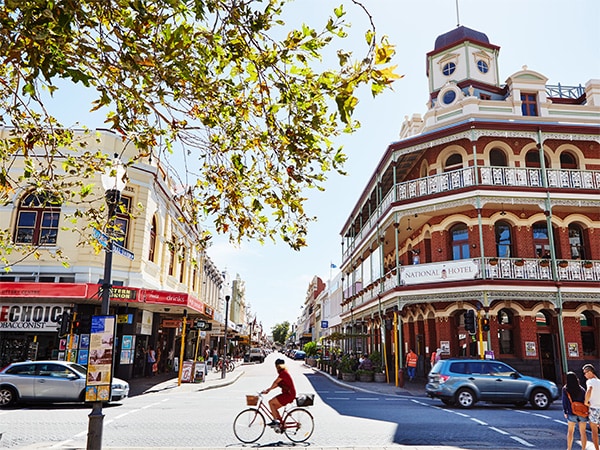
The first-class appeals of five second cities including Fremantle and more. (Credit Tourism Western Australia)
CABN’s off-grid getaways are much in demand and you’ll find them dotted around the outskirts of Adelaide in South Australia and in Victoria’s Yarra Valley. The 100 per cent sustainable custom cabins, with names like Chloe, Allira and Matilda, sleep three to four people, have composting toilets, rainwater catchment and solar power so conscious travellers can tread lightly during their stay.
CABN creator Michael Lamprell says the ethos behind the CABN philosophy is simple: it’s about placing these minimally designed spaces in some of Australia’s most stunning and stimulating landscapes to give people the opportunity to “disconnect from the crazy”.
There are also plans afoot for a number of sustainable eco-friendly tiny CABNs to be placed along the Cooloola Great Walk, on the Fraser Coast region in Queensland, about 250 kilometres north of Brisbane.
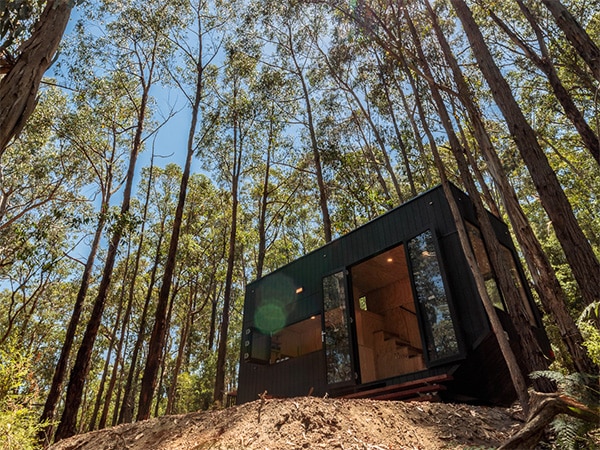
Go off-grid in a CABN tiny house.
A trio of bakeries located in perfect weekend-away locations have honed the cooking classes concept down to concentrate on one thing in particular: the equally challenging and rewarding pursuit of the perfect sourdough.
Musk: The Bake House at the new Dairy Flat Farm & Lodge is the latest project from Alla Wolf-Tasker and her family, owners of the celebrated Lake House in nearby Daylesford, which not only produces fresh-from-the-oven breads and pastries for their growing roster of properties (including Wombat Hill House Cafe), but also offers regular sourdough classes on site.
The Introduction to Sourdough Baking classes are conducted by head baker Michael James and include instruction on how to make a variety of sourdough products, from baguettes to delicious doughnuts.
Morpeth: Housed in the historic Arnott Bakehouse in the pretty Hunter Valley town of Morpeth and run by Stephen and Allison Arnott, Morpeth Sourdough’s classes combine Stephen’s knowledge as a sourdough master baker (and member of the most famous baking family in Australia) with Allison’s experience as a master of food microbiology.
Once you’ve finished learning the art of making sourdough, explore other culinary attractions in the area such as the restored tea room at Campbell’s Store and sampling the wares of Morpeth Brewery & Beer Co. at the Commercial Hotel.
Mudgee: Rebecca Sutton of Mudgee Sourdough School, who learnt the art of sourdough baking herself in 2018, will take you through her 10-hour, hands-on classes that begin with how to develop a starter and end by taking a finished baked loaf (and crumpets and pizza) from the oven.
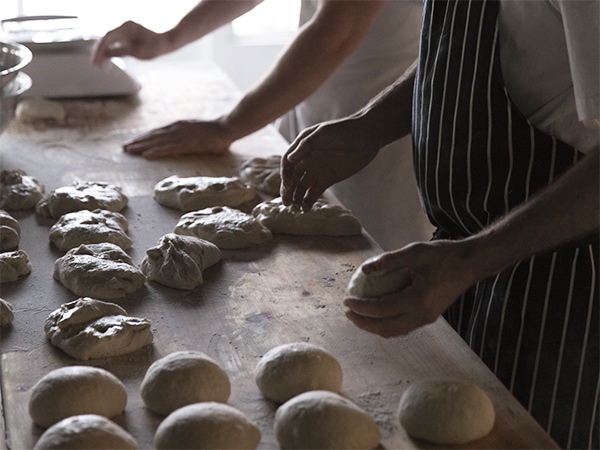
Make your own sourdough at the Bake House at the new Dairy Flat Farm & Lodge. (Credit Dairy Flat Farm)
Ultimate Winery Experiences, a consortium of premium wineries dotted across the country, acts as a portal to the heart of Australia’s most unforgettable wine experiences. Here are some ways to seriously upgrade your next cellar door experience.
Spend a day in the Hunter Valley, Australia’s oldest wine-growing region, with Tyrell’s, one of the originals: the Sacred Sites Exclusive Experience centres on a private tour of century-old vineyards with a member of the Tyrell family themselves.
Take to the skies for a sunrise hot-air balloon ride in King Valley, an alpine wine region producing Italian styles, before indulging in a prosecco breakfast at Brown Brothers.
The Cape to Vine Day Trip is a guided walking tour and in-depth food and wine experience along the Margaret River cape that culminates in a private tour and five-course paired lunch at Margaret River’s founding wine estate, Vasse Felix.
The Centenary Tasting is the ultimate tour offered by Barossa Valley’s Seppeltsfield, one of Australia’s oldest wineries, and will see you visit the Seppelt family homestead before heading to the 1878 Centennial Cellar to taste your birth year Tawny and the legendary 100-year-old Para Vintage Tawny.
A three-day private jet tour from Melbourne, this rarefied Golf, Wine & Art Tassie experience encompasses golf at Barnbougle’s iconic courses plus a day at Mona that includes a behind-the-scenes tour and tasting at on-site Moorilla winery.
Explore the history of an iconic Aussie wine producer with this VIP experience at Penfolds Magill Estate in the Adelaide Hills, which includes a visit to the winery’s vintage cellar.
At the foot of picturesque Mt Cotton, a short drive from Brisbane and the Gold Coast, Sanctuary by Sirromet’s two-night Ultimate Winery Escape includes a stay in blissful bushland surrounds, an eight-course paired dinner at Restaurant Lurleen’s and a winery tour.
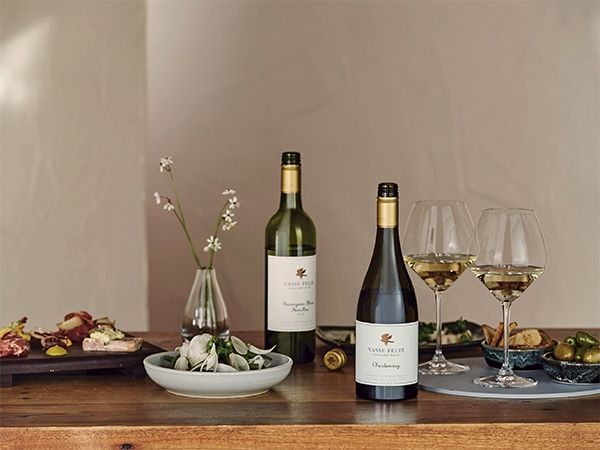
Upgrade your next cellar door visit with Ultimate Winery Experiences. (Credit Vasse Felix)
There’s more to do off-piste at Thredbo than at any other ski resort in Australia. Thredbo Village has a large variety of cafes, restaurants and retail stores: ski down to the Alpine Bar at Thredbo Alpine Hotel for a taste of Chamonix-style après, with DJs playing from 2 to 6pm as skiers hit the heated pool.
Or try Australia’s best alpine cocktails at the Après Bar of the Denman Hotel or dine at its restaurant, The Terrace. Alternatively, take a snowcat to the Kareela Hutte restaurant on top of the mountain.
Stay at Ski In Ski Out, Thredbo’s only five-star ski-in, ski-out accommodation, or River Inn, where you can ski right to the chairlift.
Victoria’s largest ski resort is also one of the best spots in Australia for cross-country skiing, with 70 kilometres of trails.
For drinks, try Apartment 3 or Astra Bar & Restaurant. QT Falls Creek’s Stingray bar has its characteristic retro style, while its Bazaar restaurant brings some chic to town, with guests encouraged to ‘dress to impress’. And the Feathertop Alpine Lodge offers the best happy hour at Falls Creek.
Astra Falls Creek designed its rooms with a European flavour, but it’s the day spa that really impresses. QT Falls Creek is also a super-stylish option.
It’s a magnet for advanced skiers because of its side and backcountry options. There’s a designated Extreme Zone just beyond the lifts, where a free snowcat vehicle will take you to an area featuring gullies, steep cliffs and tree skiing. As for beginners, they get to learn at the top of the mountain.
Dinner Plain is Hotham’s own specially built alpine village 15 minutes from the slopes. Here you’ll find Stonesthrow Restaurant at Hotel High Plains; visit after soaking at the Japanese-inspired Onsen Retreat + Spa a few doors up. There’s also fine dining at Jack Frost Restaurant.
Sleep in a four-storey chalet at Nolyski, with its own sauna, then ski down to fresh snow. Or head to Alpine Nature Experience, Australia’s only igloo village, to camp amid snow gums in a snow dome.
Some 65 per cent of Mt Buller is designated as beginner or intermediate terrain, while the remaining 35 per cent includes some of the most challenging terrain in Australasia.
Aside from Thredbo, no ski resort in Australia offers the night-time attractions of Mt Buller: from ski-in, ski-out après bars like the Arlberg Bar, to the best Austrian drinking establishment outside of Europe, Kaptans Restaurant and Herbies Bar. Mt Buller’s best coffee can be found on a sundeck at Koflers Hutte, right up on the mountain.
Ski straight to the chairlift from the luxurious Breathtaker Hotel and Spa. Chalet 5 is one of Australia’s newest luxury ski-in, ski-out options.
It’s Australia’s answer to the super-resorts of North America and Europe, an amalgamation of four ski villages that covers 1245 hectares and is serviced by Australia’s only underground alpine railway. This means you can easily stay in nearby ski town Jindabyne.
Chill in front of a fire at Marritz Hotel’s Rams Head Bar or Marritz Restaurant or meet locals at the Pub Bar in The Man From Snowy River Hotel. If staying in Jindabyne, stop for a locally distilled schnapps at Wildbrumby Distillery or a craft beer with tapas at Jindabyne Brewing. Brumby Bar & Grill offers the best dinner option in town.
Lake Crackenback Resort & Spa offers two on-site restaurants and a day spa, or stay beside the lifts at Barrakee Ski Lodge.
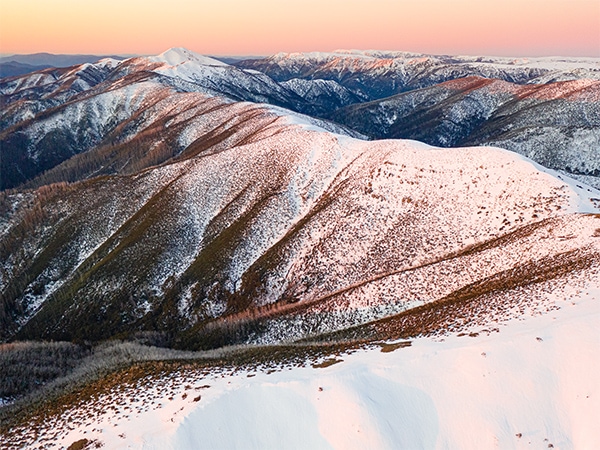
Mt Hotham… Have a winter escape in the Aussie ski fields.
Swimming with whale sharks on Ningaloo Reef has become a bucket-list staple in the last 10 years, but did you know you can swim with real whales off the coast of Cairns? Each year between May and August, gentle and curious dwarf minke whales congregate to feed and frolic. Book a multi-day dive trip with Mike Ball Dive Expeditions.
The lounging kangaroos of Western Australia’s Lucky Bay are Insta-famous these days, but you can also see them indulging in sun, sea and sand on the NSW South Coast – try Pebbly Beach and Depot Beach in Murramarang National Park – and Cape Hillsborough Beach roughly 45 minutes from Mackay, where wallabies also make the scene.
Kangaroo Island’s renowned Seal Bay Conservation Park is the first place most people think of for getting close to the Australian sea lion, but you can also see these cute creatures at Jurien Bay Marine Park on WA’s Coral Coast, about 2.5 hours’ drive from Perth. Book an offshore eco expedition with Sea Lion Charters.
The platypus is hard to spot in the wild, but that just makes a sighting that much more rewarding. Book a rainforest scuba dive in the waters of Queensland’s Eungella National Park (near Mackay) for an almost 100 per cent chance of seeing these quizzical creatures in their element.
Then there’s also the Turtle hatchings at Mon Repos near Bundaberg; swimming with manta rays off Lady Elliot Island; koala spotting at Port Stephens in NSW; searching out cassowaries at Queensland’s Mission Beach; getting up close to dolphins at Monkey Mia in WA; and coming across echidnas while walking at Cradle Mountain in Tassie.
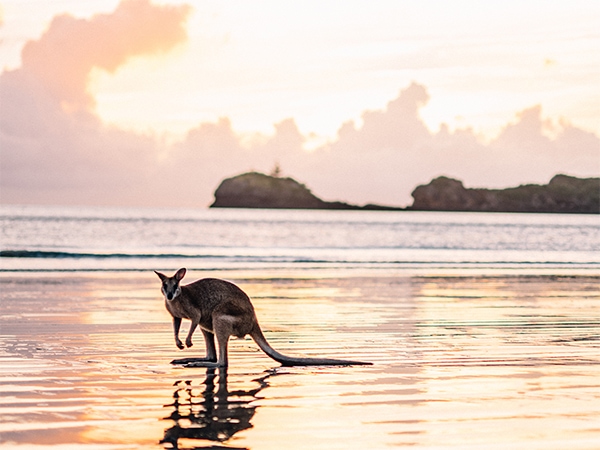
Encounter Australia’s unique wildlife. (Credit Tourism and Events Queensland)
1. The West Coast Wilderness Railway heritage steam train rolls along 35 kilometres of rainforest track right through the wilderness of Tassie’s west coast. Take a full-day trip and learn about the challenges involved in building this line that would go on to connect the region’s rich copper mines to the port at Strahan, and stop for lunch in the old mining town of Queenstown.
2. Jump on the century-old Puffing Billy for a steam train ride through the pristine forests and fern gullies of Victoria’s Dandenong Ranges, rumbling across historic timber trestle bridges as you go. Take the journey to Gembrook from Lakeside (a three-hour return) to enjoy a post-ride picnic and splash around at Emerald Lake Park, with its playground, wading pool and paddle boats for hire.
3. This half-day adventure onboard a venerable old diesel steam locomotive, the Mary Valley Rattler, travels through 46 kilometres of scenic Mary Valley in the Sunshine Coast hinterland to reach the quaint rural village of Amamoor. Departing and returning to Gympie, make sure to explore restored Gympie Station.
4. This day trip from Sydney on the Hawkesbury River Express travels through Ku-Ring-Gai Chase National Park to the Hawkesbury River in restored carriages from the ’20s, ’30s and ’40s and includes a cruise on Brisbane Water. You can also opt to join the famous Riverboat Postman cruise for lunch.
5. Ride deep into the Southern Forests on the Pemberton Tramway to get a unique perspective on the region’s towering karri forests, wildflowers and wild rivers – which you’ll trundle over on trestle bridges – and stop off at the Cascades, a series of rapids that tumble over the limestone rocks of Lefroy Brook.
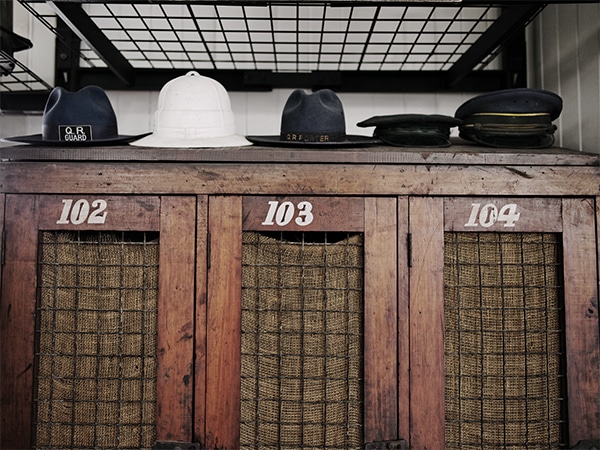
Mary Valley Rattler… Choose from one of the many family-friendly rail journeys across Australia. (Credit Jonathan Cami)
Our vast landscape is jam-packed with highways and byways worth exploration. Here, eight to drive next.
The most iconic of Aussie road trips is the longest stretch of straight road in the world, clocking in at 1256 kilometres and covering three time zones from the WA goldfields to the Eyre Peninsula.
A cruise along Victoria’s legendary Great Ocean Road (243 kilometres) is considered one of Australia’s quintessential road trips and takes in not only the famous 12 Apostles but scenic views for days and seaside charms aplenty in pit stops like Lorne and Warrnambool.
At roughly 176 kilometres long, the journey from Orford to St Helens takes you through bucolic Tasmanian countryside and past coastal vistas, with plenty of opportunity to stop along the way at quaint towns and villages.
The region has a pick-and-mix array of road trips, from Esperance to Wave Rock, following the PUBLIC Silo Trail and crisscrossing the Wheatbelt.
The 900-kilometre journey from Sydney to Brisbane is the stuff of summer holiday legend, taking in destinations such as Coffs Harbour and Byron Bay.
Redirect the mail for this roughly 3700-kilometre coast-to-coast trip from Cairns to Broome. Along the way you’ll pass through some rock-star destinations, including Katherine in the NT and the Kimberley.
This 660-kilometre road forges through the Kimberley, from Derby to Wyndham, and offers up adventure and scenery in spades. Be advised: you will need a 4WD.
You’ll also require a 4WD for this roughly 1000-kilometre journey past World Heritage listed wonders such as the Daintree Rainforest and Great Barrier Reef.
Take a road trip along the Great Ocean Road or choose one of the many other iconic Aussie road trips.
LEAVE YOUR COMMENT